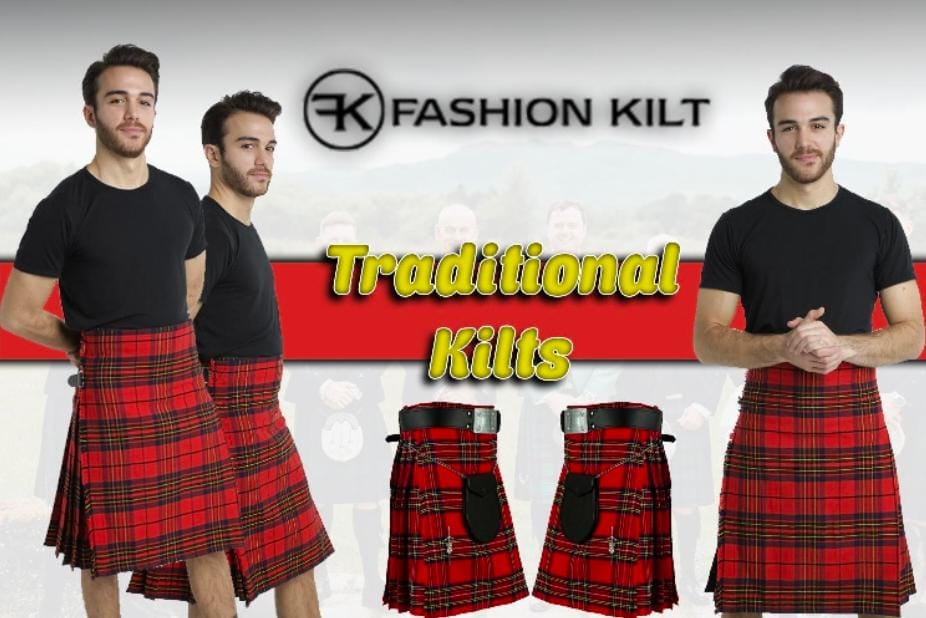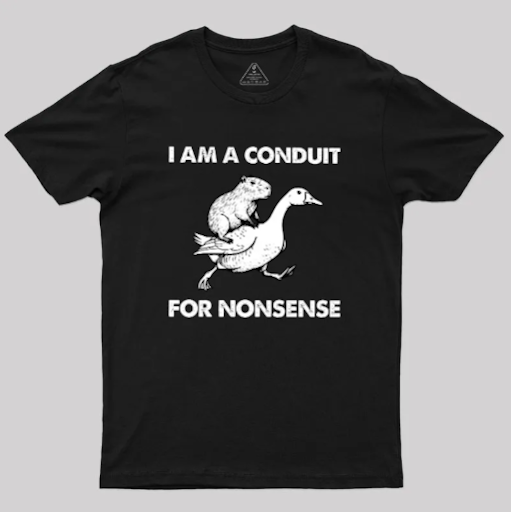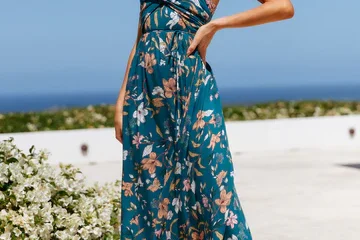FASHION
How to Wear a Traditional Kilt with Pride | Scottish Fashion Tips

The traditional Scottish kilt stands as a timeless symbol of pride, heritage, and style, woven deeply into the fabric of Scottish culture. Originating from the rugged landscapes and ancient clans of the Highlands, the kilt has evolved from a practical garment to a globally recognized icon of Scottish identity. Wearing a kilt isn’t merely about donning attire—it’s about embracing centuries of tradition, craftsmanship, and symbolism. This guide explores how to wear a traditional kilt with pride, offering insights into its significance, styling tips for different occasions, and practical advice on measurement, accessories, and care. Whether you’re a newcomer curious about Scottish culture or a seasoned enthusiast looking to deepen your understanding, this journey into the world of Scottish kilts promises to inspire and inform.
Understanding the Significance of the Kilt
The traditional Scottish kilt holds deep cultural significance, symbolizing Scottish identity and heritage. Originating from the Highland clans of Scotland, kilts were originally practical garments suited for the rugged terrain and varied weather conditions. Over time, kilts became emblematic of Scottish pride, worn during celebrations, ceremonies, and everyday life. Exploring the history of the kilt reveals its evolution from ancient times to its contemporary status. Early kilts were simple lengths of cloth draped around the body and belted at the waist, while modern kilts incorporate pleats and distinctive tartan patterns. Understanding this evolution helps enthusiasts appreciate the kilt’s role in preserving Scottish culture and identity.
Choosing the Right Kilt Style for You
Selecting the perfect kilt involves considering various factors, including occasion, personal style, and fit. Traditional tartan kilts come in numerous clan-specific patterns, each with its own history and symbolism. Utility kilts, inspired by traditional designs, offer practicality with modern functionality, featuring pockets and durable fabrics suitable for outdoor activities. Exploring contemporary kilt designs reveals a blend of tradition and innovation. Fashion-forward kilts may incorporate non-traditional fabrics, vibrant colors, and unique patterns, appealing to individuals seeking a modern twist on a classic garment. Choosing the right kilt style allows wearers to express their personality while honoring Scottish heritage.
Mastering the Art of Kilt Measurement
Achieving a perfect fit is essential when wearing a kilt. Proper measurement ensures comfort and enhances the kilt’s appearance. Begin by measuring the waist at the navel, as traditional kilts are worn higher than trousers. Length measurement determines where the kilt falls on the legs, typically just above or below the knee. Understanding pleat depth and alignment contributes to the kilt’s aesthetic appeal. Pleats are folded to the sett (pattern) of the tartan, with deeper pleats creating a fuller appearance. Ensuring accurate measurements ensures the kilt hangs correctly and moves gracefully with the wearer, reflecting traditional Scottish craftsmanship.
Pairing Your Kilt with the Perfect Accessories
Accessories play a crucial role in complementing the kilt and enhancing its overall look. Essential accessories include the sporran, a pouch worn around the waist, traditionally made from leather or fur. Sporrans vary in size and design, from formal dress sporrans adorned with metalwork to casual day sporrans suitable for everyday wear. Selecting a kilt belt that matches the sporran enhances the kilt’s appearance and ensures a secure fit. Belts may feature Celtic designs or be crafted from leather for durability and style. Hose (socks) worn with garter flashes add a touch of color and tradition, with tartan flashes coordinating with the kilt’s pattern.
Understanding Kilt Etiquette and Tradition
Adhering to kilt etiquette ensures wearers honor Scottish tradition and cultural norms. When sitting, the kilt should be draped over the knees to maintain modesty and comfort. Standing, wearers should ensure the kilt’s pleats face to the rear, a nod to military tradition and Highland heritage. Properly wearing kilt accessories, such as positioning the sporran centrally between the kilt’s aprons, reflects attention to detail and respect for Scottish customs. Understanding kilt etiquette fosters a sense of connection to Scotland’s rich heritage and traditions, promoting cultural awareness and appreciation.
Caring for Your Kilt – Maintenance Tips
Maintaining your kilt ensures it retains its impeccable appearance and durability, preserving its significance as a cherished piece of Scottish heritage. Proper care begins with understanding the unique characteristics of your kilt’s fabric, whether it’s traditional wool or a modern blend. Here’s a detailed look at essential maintenance tips to keep your kilt in pristine condition:
Fabric Care and Cleaning Methods
Understanding the fabric composition of your kilt is crucial for determining the appropriate cleaning method. Traditional wool kilts are resilient and naturally water-resistant, making them suitable for a variety of weather conditions. Dry cleaning is typically recommended for wool kilts to maintain their shape and color vibrancy. For cotton or blended fabrics, follow manufacturer guidelines for washing and drying to avoid shrinking or damage. Proper storage is essential to prevent creasing and maintain the kilt’s pleats. Hang your kilt on a specially designed kilt hanger or lay it flat in a garment bag to protect the fabric. Avoid folding your kilt, as this can cause permanent creases that are challenging to remove. Store your kilt in a cool, dry place away from direct sunlight to prevent fading and moisture damage.
Handling Pleats and Pressing
Preserving the pleats of your kilt ensures it maintains its distinctive appearance. When hanging your kilt, ensure the pleats are evenly aligned and hanging straight. Use a garment steamer or iron on a low setting with a pressing cloth to gently smooth out any wrinkles or creases. Be cautious not to press directly on the pleats, as this can flatten them and diminish their crispness. Regularly inspect your kilt for any signs of wear and tear, such as loose threads, frayed edges, or worn pleats. Addressing minor repairs promptly can prevent further damage and extend the lifespan of your kilt. For intricate repairs or alterations, consult a professional kilt maker or tailor experienced in working with traditional Scottish attire. Wool kilts are particularly susceptible to damage from moths and other pests attracted to natural fibers. Store your kilt in a garment bag or sealed container with mothballs or cedar blocks to deter insects. Periodically inspect your storage area and kilt for any signs of pest activity, such as holes or insect debris, and take immediate action to protect your garment.
Professional Cleaning and Maintenance
Periodically, consider professional cleaning and maintenance services to ensure your kilt receives expert care. Professional cleaners experienced in handling delicate fabrics and traditional attire can help maintain the integrity of your kilt while addressing any specific cleaning or repair needs. Discuss your kilt’s care requirements with the cleaner to ensure they use appropriate methods and products. Adjust your kilt care routine according to seasonal changes and weather conditions. During warmer months, ensure your kilt is stored in a cool, dry place to prevent mold or mildew growth. In colder months, consider adding extra layers such as a kilt pin or blanket to provide additional warmth while maintaining the kilt’s elegance and style.
By following these maintenance tips, you can ensure your kilt remains a cherished part of your wardrobe for years to come, embodying the timeless tradition and craftsmanship of Scottish attire. Proper care not only enhances the kilt’s appearance but also preserves its cultural significance, allowing you to wear it with pride on any occasion.
A Symbol of Cultural Heritage
The Scotland kilt stands as a quintessential symbol of Scottish cultural heritage, embodying centuries of tradition and craftsmanship. Originating from the Highland clans of Scotland, the kilt evolved from a practical garment into a powerful symbol of Scottish identity. Made from durable wool and adorned with intricate tartan patterns, each Scotland kilt represents a specific clan or region, reflecting unique histories and traditions. Worn during ceremonial events like weddings, Highland games, and cultural festivals, the Scotland kilt signifies pride in Scottish ancestry and a deep connection to the country’s rich cultural tapestry. Today, the Scotland kilt continues to captivate enthusiasts worldwide, blending tradition with contemporary fashion trends, ensuring its enduring legacy for generations to come.
Styling Your Outfit for Different Occasions
Versatility is key when styling a kilt for various events and activities. Formal occasions, such as weddings and ceilidhs, call for traditional attire, with a Prince Charlie jacket and waistcoat complementing the kilt. Daywear allows for more casual styling, with tweed jackets or Argyll jackets pairing effortlessly with tartan kilts. Layering enhances the kilt’s versatility, with options to add a dress shirt, tie, and cufflinks for formal events. Accessories such as sgian-dubhs (traditional knives) and tartan ties add a touch of Scottish flair to any outfit. Coordinating the kilt’s tartan pattern with other garments ensures a cohesive and stylish appearance for any occasion.
Showcasing Modern Trends in Kilt Fashion
Modern kilt fashion combines traditional craftsmanship with contemporary trends, appealing to a diverse audience. Designers incorporate innovative fabrics, such as lightweight tweeds or denim, into kilt designs for enhanced comfort and durability. Bold colors and patterns offer a fresh take on classic tartans, appealing to fashion-forward enthusiasts. Exploring fusion styles allows wearers to personalize their kilt with custom details or embellishments. Hybrid kilts blend traditional Scottish elements with global influences, reflecting a global appreciation for Scottish culture. Embracing modern trends in kilt fashion celebrates creativity while honoring Scotland’s rich textile heritage. Wearing a kilt symbolizes pride in Scottish heritage and culture, fostering a sense of connection to Scotland’s history and traditions. Kilts are worn during cultural celebrations, such as Highland games and Burns Night suppers, where participants honor Scotland’s contributions to literature, music, and sport. Participating in Scottish festivals promotes cultural awareness and appreciation, with kilts serving as a unifying symbol of Scottish identity. Celebrating Scottish culture through attire encourages individuals to learn about Scotland’s diverse regions, clans, and customs, fostering a global appreciation for Scottish heritage.
Conclusion
Wearing a traditional kilt is more than just donning a garment—it’s a celebration of Scottish heritage, culture, and identity. From its historical roots in the Highland clans to its modern-day symbolism, the kilt embodies resilience, tradition, and pride. By understanding the significance of the kilt, choosing the right style, mastering measurement techniques, and embracing kilt etiquette, wearers can honor Scottish traditions while expressing their personal style. Accessories play a vital role in enhancing the kilt’s appearance and functionality, from sporrans and belts to hose and sgian-dubhs. Styling a kilt for different occasions allows for versatility, whether attending a formal event or participating in a casual gathering. Proper care and maintenance ensure the kilt remains in pristine condition, preserving its longevity and vibrancy.
FAQs About Wearing Kilts with Confidence
Q1: Are kilts comfortable to wear?
Kilts are designed for comfort, allowing for freedom of movement and breathability. Traditional kilts are typically made from wool, which provides insulation in cooler climates and breathes in warmer temperatures. Modern kilts may incorporate lightweight fabrics for enhanced comfort.
Q2: How do I choose the right size kilt?
To choose the right size kilt, measure your waist at the navel and determine the desired kilt length. Kilts are traditionally worn higher than trousers, so it’s essential to measure accordingly. Consulting with a kilt specialist or using online sizing guides can help ensure a proper fit.
Q3: Can I wear a kilt to formal events?
Yes, kilts are appropriate for formal events such as weddings, ceilidhs, and dinners. Pair your kilt with a formal jacket, waistcoat, and appropriate accessories like a sporran and kilt belt. Choosing a tartan that reflects your family or clan heritage adds a personal touch to your formal attire.
Q4: How should I care for my kilt?
Proper care ensures your kilt remains in excellent condition. Dry cleaning is recommended for wool kilts to maintain their shape and color vibrancy. Store your kilt on a proper hanger or flat in a garment bag to prevent creasing and maintain its pleats. Regular inspections and repairs will extend the life of your kilt.
Q5: Where can I find authentic Scottish kilts and accessories?
Authentic Scottish kilts and accessories can be found at reputable kilt shops, both online and in Scotland. Look for stores that specialize in traditional Scottish attire and offer a wide selection of tartans, accessories, and customization options.
FASHION
Tokyo-Tiger Yamanote Line Platform Sign Hoodie MetroPulse – 2025 Cyber Monday Sale

For fans of Japanese streetwear and bold, quirky fashion, the 2025 Cyber Monday Sale is the perfect time to explore standout pieces. The Tokyo-Tiger Yamanote Line Platform Sign Hoodie MetroPulse is one of the season’s most anticipated releases, offering a playful mix of Japanese urban culture and modern streetwear style. Alongside this, shoppers can discover unique Japanese t shirts and experiment with eccentric pieces like ugly cardigan sweaters, creating an eclectic, eye-catching wardrobe. This hoodie combines the nostalgia of Tokyo’s iconic Yamanote Line with contemporary design elements, making it a must-have for anyone looking to make a fashion statement this Cyber Monday.
Iconic Design: Tokyo Inspiration Meets Streetwear
The Tokyo-Tiger Yamanote Line Platform Sign Hoodie MetroPulse draws its inspiration from Tokyo’s famous metro system. The bold graphics replicate the familiar platform signs, bringing a slice of Japan’s urban life directly into your wardrobe. Fashion enthusiasts who love Japanese t shirts will find that this hoodie pairs seamlessly with their existing collections, allowing for versatile layering options. Its playful nod to city life reflects Tokyo’s unique culture of combining functionality and style, a theme that resonates strongly in modern streetwear.
The hoodie’s standout feature is the fusion of graphic design and comfort. With detailed prints of station signs and route maps, it captures the dynamic energy of Tokyo streets. Meanwhile, the hoodie’s cut and fit maintain a casual, approachable feel that makes it ideal for everyday wear. For those who like to mix styles, pairing the MetroPulse hoodie with unconventional pieces like ugly cardigan sweaters can create a fashion-forward look that balances eccentricity and urban edge.
Comfort and Craftsmanship: Designed to Wear
The MetroPulse hoodie isn’t just about looks—it’s built for comfort. Made from a premium cotton blend, it offers softness, breathability, and durability. The fabric is perfect for layering over Japanese t shirts or under heavier jackets during colder months. The hoodie features a roomy kangaroo pocket, a sturdy hood with adjustable drawstrings, and reinforced stitching that ensures longevity. Its unisex design allows anyone to enjoy a comfortable, flattering fit, whether running errands, commuting, or attending casual meetups.
Cyber Monday 2025: Don’t Miss the Deals
Cyber Monday 2025 is shaping up to be one of the most exciting shopping events of the year, with exclusive discounts on the Tokyo-Tiger Yamanote Line Platform Sign Hoodie MetroPulse. Retailers are expected to offer limited-time bundles that may include additional Japanese t shirts or complementary streetwear pieces, giving shoppers a chance to expand their wardrobe at unbeatable prices. Early access is highly recommended, as these unique hoodies are likely to sell out quickly due to high demand from collectors and streetwear enthusiasts.
Versatility: Wear It Your Way
One of the key appeals of the MetroPulse hoodie is its versatility. Its urban-inspired design makes it ideal for casual outings, while its comfortable fabric ensures it’s suitable for daily wear. Fashion-forward individuals can experiment by layering it over Japanese t shirts for a street-ready look or combining it with statement pieces like ugly cardigan sweaters for an ironic, playful twist. The hoodie pairs well with jeans, joggers, or even skirts, making it adaptable for a range of personal styles.
The unique graphics also make it a conversation starter. Fans of Japanese culture will appreciate the homage to the Yamanote Line, while those new to Tokyo streetwear will enjoy the bold aesthetic. This combination of visual appeal and cultural reference ensures the MetroPulse hoodie fits perfectly into any modern wardrobe.
Trend Spotlight: Japanese Streetwear
Japanese streetwear has grown in popularity worldwide, driven by its blend of creativity, humor, and practicality. The Tokyo-Tiger Yamanote Line Platform Sign Hoodie MetroPulse embodies these qualities, offering a piece that is both functional and visually striking. Those who enjoy collecting Japanese t shirts will find this hoodie enhances their existing collection, while bold, experimental fashion lovers can pair it with ugly cardigan sweaters to push boundaries and express personality. This hoodie is perfect for anyone who values individuality and wants to make a statement through clothing.
How to Secure Yours
To make the most of Cyber Monday 2025, planning ahead is essential. Check retailer websites for early-bird access or pre-sale opportunities. Limited quantities of the Tokyo-Tiger MetroPulse hoodie mean that prompt action is necessary to avoid missing out. Alongside exclusive deals, shoppers may also find bundles that include Japanese t shirts or even quirky, fashion-forward ugly cardigan sweaters, providing a fun opportunity to mix and match pieces for a one-of-a-kind style.
Final Thoughts: A Must-Have Hoodie
In conclusion, the Tokyo-Tiger Yamanote Line Platform Sign Hoodie MetroPulse is more than just a trendy hoodie—it’s a celebration of Japanese urban culture and streetwear innovation. With Cyber Monday 2025 approaching, fashion enthusiasts have a unique chance to secure a standout piece that combines comfort, style, and cultural flair. Pair it with other Japanese t shirts or get creative with ugly cardigan sweaters to create looks that are as bold and playful as they are stylish. This hoodie is a must-have for anyone looking to capture the energy of Tokyo streets while staying ahead of the fashion curve.
FASHION
Men’s Washed Christian T-Shirts Are Now Available at GuidingCross

GuidingCross is proud to announce the arrival of our new men’s washed Christian t-shirts, a perfect blend of faith, comfort, and style. Alongside our popular Christian hoodie sets and Christian kids hoodie sets, these t-shirts allow men and their families to showcase their beliefs in a fashionable yet meaningful way. Whether you are seeking a comfortable tee for daily wear, church events, or casual outings, our washed Christian t-shirts are designed to provide softness, durability, and inspiring faith-based messages. Paired with cozy hoodies for adults and children, these new additions to our collection help families express their devotion collectively, creating a unified, stylish look that speaks to both faith and family values.
The Appeal of Washed Christian T-Shirts
Washed Christian t-shirts offer a relaxed, vintage-inspired style that combines comfort with a timeless aesthetic. The soft, pre-washed fabric ensures a worn-in feel from the very first wear, making these t-shirts ideal for everyday life. Each design is carefully printed with scripture verses, uplifting messages, or faith-inspired graphics that make a statement without compromising comfort.
Men can wear these t-shirts with jeans, shorts, or layering pieces like our Christian hoodie sets for a complete casual outfit, while children can pair Christian kids hoodie sets with complementary tees for a coordinated family look. The versatility of washed t-shirts makes them suitable for casual outings, church events, and even family gatherings, allowing faith to be celebrated in style.
Quality You Can Trust
At GuidingCross, quality is at the forefront of every product we create. Our washed Christian t-shirts are made from premium materials designed to withstand repeated wear and washing while maintaining their softness and vibrant graphics. The pre-wash treatment ensures that each t-shirt has a vintage look without sacrificing durability, making them a long-lasting addition to any wardrobe.
Similarly, our Christian hoodie sets and Christian kids hoodie sets are crafted for comfort and resilience. Soft, high-quality fabrics combined with careful stitching make these hoodies ideal for everyday wear, ensuring that both adults and children can enjoy faith-inspired apparel that lasts. This combination of quality and style allows families to confidently wear their faith on their sleeves, literally and figuratively.
Faith-Inspired Designs for Every Man
GuidingCross understands that men want faith-based apparel that is both meaningful and stylish. Our washed Christian t-shirts feature bold scripture verses, subtle faith symbols, and inspirational messages designed to resonate with modern men. Whether you prefer a minimalistic look or a statement piece, there is a t-shirt to suit every style and occasion.
These t-shirts pair effortlessly with Christian hoodie sets for adults, allowing for layered outfits during cooler seasons or casual outings. For children, matching Christian kids hoodie sets provide a coordinated look that emphasizes family unity and shared faith. Together, these pieces create a complete faith-inspired wardrobe suitable for men of all ages and their families.
Comfort Meets Versatility
The washed fabric of these t-shirts is not only soft and comfortable but also highly versatile. They can be dressed up or down depending on the occasion—paired with jeans and sneakers for a casual day out, layered under a hoodie for chilly evenings, or worn with slacks for a more polished look during church services.
Children’s Christian kids hoodie sets offer similar versatility. Lightweight yet durable, they allow kids to move freely while maintaining comfort and style. Parents can coordinate outfits by matching their washed Christian t-shirts with adult Christian hoodie sets, creating a visually appealing, family-oriented look that celebrates faith together.
Encouraging Faith in Everyday Life
Wearing faith-based clothing is a powerful way to express beliefs and inspire others. Each washed Christian t-shirt carries a message that encourages reflection, hope, and spiritual growth. These t-shirts, along with Christian hoodie sets and Christian kids hoodie sets, allow men and families to integrate faith into their daily wardrobe, reminding themselves and others of God’s love and guidance.
Children benefit from seeing faith expressed through clothing as well, helping them develop spiritual awareness and pride from a young age. Matching family apparel fosters a sense of unity and encourages children to embrace their beliefs confidently.
Perfect for Gifts and Special Occasions
Men’s washed Christian t-shirts make thoughtful gifts for birthdays, holidays, or religious milestones. Paired with Christian hoodie sets for adults and Christian kids hoodie sets for children, these items create meaningful gifts that are both stylish and spiritually significant.
They are also ideal for family gatherings, church retreats, or community events, where faith-inspired clothing can enhance the sense of togetherness and shared devotion. The combination of quality, style, and spiritual encouragement ensures that these gifts will be cherished and worn for years to come.
Building a Complete Faith-Filled Wardrobe
Integrating washed Christian t-shirts into your wardrobe allows men to create versatile outfits that reflect their beliefs while remaining fashionable. Pair them with Christian hoodie sets for a layered look, combine with jeans or shorts for casual wear, or coordinate with children’s Christian kids hoodie sets for a unified family appearance.
This approach ensures that faith is celebrated daily, whether through casual wear, family activities, or special occasions. GuidingCross’s collection enables men and their families to express devotion confidently, stylishly, and comfortably.
Conclusion
Men’s washed Christian t-shirts from GuidingCross provide the perfect combination of style, comfort, and spiritual inspiration. Alongside Christian hoodie sets and Christian kids hoodie sets, these t-shirts allow families to create coordinated faith-based outfits that are meaningful, stylish, and versatile.
Whether you are shopping for everyday wear, gifts, or special occasions, our washed Christian t-shirts and matching apparel empower men and their families to wear their faith proudly. Explore GuidingCross today and discover how our collection can help you integrate faith into your daily wardrobe, inspire others, and celebrate God’s love with confidence and style.
FASHION
GeeksOutfit Is Where Geek Meets Style

In today’s fashion world, being a geek is no longer just about comic books and video games—it’s a bold lifestyle statement. That’s where GeeksOutfit steps in, offering the perfect fusion of fandom and fashion. Whether you’re searching for quirky ugly Christmas sweaters to celebrate the holiday season with humor, or you’re after a classic geek t shirt that shouts your allegiance to your favorite fandom, GeeksOutfit has you covered. It’s a brand that understands what geeks love and how they want to express themselves.
More Than Just Merchandise
GeeksOutfit isn’t just another online store peddling generic pop culture prints. It’s a curated collection for fans who want to wear their interests with pride. From movies and TV shows to retro gaming and anime, every piece reflects passion, nostalgia, and a touch of fun. Whether you’re a hardcore comic con attendee or a casual fan looking to add a fun twist to your wardrobe, GeeksOutfit’s selection makes geek culture wearable, stylish, and comfortable.
Ugly Christmas Sweaters—But Make It Geeky
Every December, ugly Christmas sweaters make their annual appearance—but GeeksOutfit has taken them to the next level. Why settle for reindeer and snowmen when you can wear Darth Vader in a Santa hat or Pikachu tangled in Christmas lights? These aren’t just conversation starters; they’re fashion statements that mix holiday cheer with fandom love.
GeeksOutfit’s collection of holiday sweaters is designed for those who want to bring humor and personality to the season. Made from quality materials and featuring clever, fandom-inspired designs, these sweaters are perfect for office parties, family dinners, or just cozying up for a Star Wars marathon.
The Classic Geek T Shirt, Reinvented
Let’s talk about the backbone of any geek wardrobe—the geek t shirt. A good geek tee is more than just a shirt; it’s a badge of honor, a way to silently communicate to fellow fans in the wild. At GeeksOutfit, the t-shirts go beyond the basics. From subtle references only true fans will get, to bold, laugh-out-loud prints, every design is created with care and authenticity.
Whether you’re into classic arcade games, cult favorite sci-fi series, or fantasy lore, there’s a shirt for you. The best part? These shirts are stylish enough to wear out, comfy enough to lounge in, and timeless enough to keep in your rotation for years.
Fashion That Starts Conversations
One of the greatest joys of wearing geek fashion is that it connects you with others. That Doctor Who scarf or Zelda hoodie might spark a conversation with a stranger at the coffee shop. Your Avengers-themed sweater might get a thumbs-up at your company holiday party. GeeksOutfit knows this, and leans into it. Their pieces are not just wearable—they’re icebreakers, identity statements, and confidence boosters.
Quality Meets Creativity
All the clever designs in the world mean nothing without quality. GeeksOutfit prides itself on offering apparel that’s as well-made as it is well-designed. Each item is made with durable fabrics and high-quality printing that stands up to wear and washing. You won’t have to worry about your favorite geek tee fading after two trips through the laundry, or your holiday sweater falling apart before the New Year.
This commitment to quality ensures that every piece you buy from GeeksOutfit isn’t just a novelty—it’s something you’ll wear again and again.
Inclusive Sizing and Unisex Options
Another standout feature of GeeksOutfit is its commitment to inclusivity. Geek culture is for everyone, and so is their clothing. With a wide range of sizes and unisex fits, the brand makes it easy for fans of all shapes and styles to find something they love and feel confident in.
A Hub for All Things Geek
GeeksOutfit is more than just a clothing retailer; it’s a celebration of geek culture in all its forms. It’s a place where Star Trek fans, anime lovers, Dungeons & Dragons players, and Marvel nerds can all find something that speaks to their passion. The brand isn’t trying to be trendy—it’s building a style that’s timeless because it’s rooted in what fans truly care about.
Final Thoughts
In a world where personal style is a reflection of personal identity, GeeksOutfit delivers something truly unique: fashion that embraces your geeky side with pride. Whether you’re looking for festive ugly Christmas sweaters, your new favorite geek t shirt, or just want to rep your fandom in a stylish way, GeeksOutfit is where geek meets style—and where fans meet fashion.
So if you’re ready to upgrade your wardrobe with humor, heart, and a whole lot of geekiness, it’s time to explore what GeeksOutfit has to offer. Your inner fan deserves to shine—and now it can do it in style.
-

 NEWS1 year ago
NEWS1 year agoSearchinventure: Redefining the Digital Experience
-

 HEALTH1 year ago
HEALTH1 year agoUnveiling the //vital-mag.net blog: Your Gateway to Health and Wellness
-

 NEWS1 year ago
NEWS1 year agoThe Alicia Case in Atlanta: A Deep Dive
-

 FASHION1 year ago
FASHION1 year agoHow to Style Floral Long-Sleeve Homecoming Dresses for a Glamorous Look
-

 BUSINESS1 year ago
BUSINESS1 year agoPedro Vaz Paulo: A Visionary Business Consultant Driving Success
-

 NEWS1 year ago
NEWS1 year ago2023-1954: A Journey Through the Decades
-

 Pets1 year ago
Pets1 year agoUltimate Strength: Heavy-Duty Tactical Dog Collars for Large Breeds
-

 TECHNOLOGY1 year ago
TECHNOLOGY1 year agoThe Evolution of Technology: From 1954 to 2023
